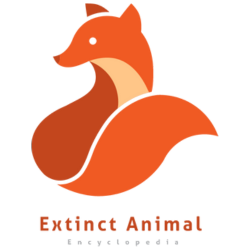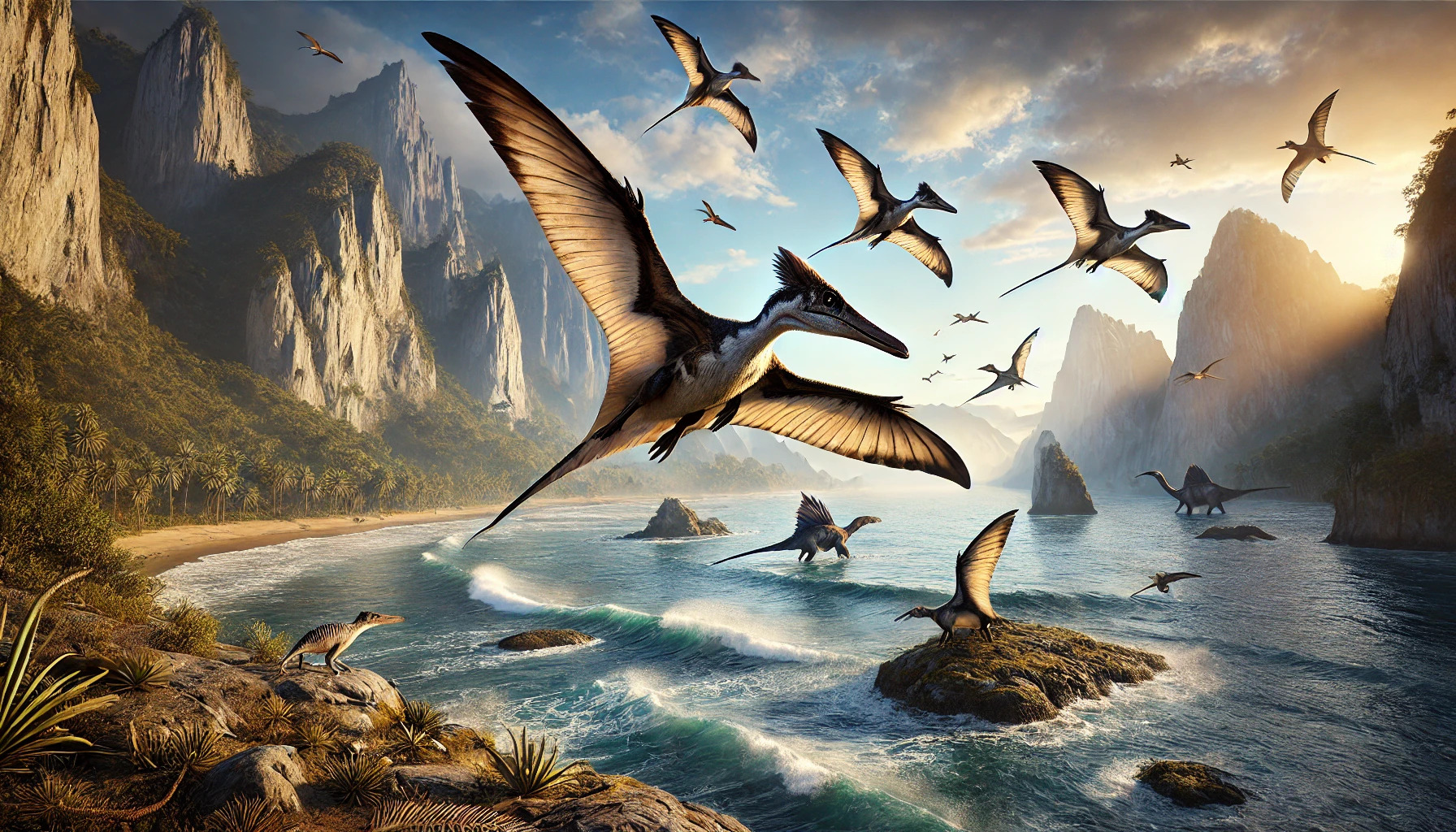Rhamphorhynchus was a fascinating flying reptile from the Jurassic period, known for its long tail and distinctive features. This pterosaur, measuring about 50 centimeters in length, thrived during a time when the skies were filled with various prehistoric creatures. With its diamond-shaped tail rudder and forward-slanting teeth, it was well-adapted for catching fish and navigating through the air.
Fossils of Rhamphorhynchus have been discovered in Europe, helping scientists piece together its story. It belonged to a group of reptiles called pterosaurs, which were the first creatures to evolve powered flight. Understanding its unique traits provides valuable insight into the diversity of prehistoric life and environments.
Exploring Rhamphorhynchus opens a window into the amazing adaptations of ancient flying reptiles. This fascinating creature not only captures imaginations but also highlights the intricate web of life during the Jurassic era.
Evolution and Discovery
The story of Rhamphorhynchus involves its fascinating early discoveries, how it was classified over time, and the rich fossil record that helps us understand this remarkable creature. Each aspect sheds light on its evolution and significance in the prehistoric world.
First Discoveries
Rhamphorhynchus was first discovered in the early 19th century. Fossils were found in the Solnhofen limestone of Germany, a site known for exceptionally preserved prehistoric specimens. In 1825, it was identified and described by the German naturalist Georg von Meyen.
Initially, it was confusingly classified with other pterosaurs, primarily Pterodactylus. This mix-up occurred because of the similarities in their features. As more fossils were discovered, experts began to recognize Rhamphorhynchus as a distinct genus, marking a significant step in understanding flying reptiles.
Classification
Rhamphorhynchus belongs to the Pterosauria clade, known for their flight capabilities. Within this group, it is categorized under the family Rhamphorhynchidae. This classification highlights its unique adaptations, such as its long tail and specific skull structure.
The name Rhamphorhynchus itself stems from Greek, meaning “beak snout.” These adaptations indicate its ecological role during the Late Jurassic period. Changes in understanding have led to clearer distinctions between it and other pterosaur species over the years.
Fossil Record
The fossil record of Rhamphorhynchus is quite rich and informative. Fossils span a significant timeframe, with specimens dating from around 159 to 144 million years ago. They reveal crucial details about its physical characteristics and potential behavior.
Key features include a long tail with a soft-tissue vane, which possibly played a role in flight stability. The preserved bones show that Rhamphorhynchus had a relatively high growth rate, offering insights into its life history. Discoveries from different locations in Europe have provided a more complete picture of its existence, further enriching our understanding of these ancient creatures.
Anatomy and Appearance
Rhamphorhynchus had distinctive features that set it apart from other flying reptiles. Its size, skull structure, and tail characteristics played a significant role in its ability to fly and hunt.
Size and Wingspan
Rhamphorhynchus was relatively small compared to some other pterosaurs, measuring about 50 cm (20 inches) long. Its wingspan extended to about 1.5 meters (approximately 5 feet). This size, along with its lightweight body structure, allowed for agile flying.
The wings were formed by a membrane stretching from its elongated fingers to its body. This design provided both lift and maneuverability in the sky. The smaller frame likely made it easier to navigate through forested areas while hunting for insects.
Skull and Teeth
The skull of Rhamphorhynchus was long and narrow, giving it a distinctive appearance. It featured large eyes that likely enhanced its ability to see in low light conditions. The nostrils were positioned toward the back of the beak, a unique trait among pterosaurs.
Rhamphorhynchus had numerous teeth that interlocked, which were ideal for catching slippery prey such as fish. These teeth slanted forward, allowing it to grasp its food securely. This combination of features made it an effective predator in its environment.
Tail Features
The tail of Rhamphorhynchus was long and stiffened by ligaments. This anatomical design provided stability during flight. At the end of its tail, there was a diamond-shaped rudder that helped with steering.
The tail rudder greatly improved its ability to make sharp turns and maintain balance while flying. This feature was essential for maneuvering through crowded areas or when chasing after prey. The tail structure highlights the adaptations that made Rhamphorhynchus a successful flyer in the Late Jurassic period.
Behavior and Ecology
Rhamphorhynchus was a fascinating prehistoric creature with unique behaviors and ecological roles. Its diet, flight skills, and reproductive habits provide insight into how this pterosaur lived during the Late Jurassic period.
Diet and Hunting Patterns
Rhamphorhynchus primarily fed on fish and insects. Its long, narrow beak was well-suited for catching slippery prey in water.
The pterosaur’s teeth were sharp and slanted forward, allowing it to grip its catch effectively. It likely hunted near water sources, using its keen eyesight to spot prey.
Fossil evidence suggests that Rhamphorhynchus might have also scavenged when necessary. This adaptability in diet helped it thrive in various environments.
Flight Capabilities
Rhamphorhynchus had impressive flight abilities, which were crucial for its survival. With a wingspan of about 1.5 meters (5 feet), it was capable of agile maneuvers in the air.
Its long tail, finished with a diamond-shaped rudder, provided stability and control during flight. This tail helped the pterosaur make sharp turns and dive for prey.
Research shows that Rhamphorhynchus was a glider, conserving energy while soaring over water and land. This ability allowed it to search for food without tiring quickly.
Reproduction and Lifespan
The reproductive habits of Rhamphorhynchus are not extensively documented. However, like many reptiles, it likely laid eggs.
Fossilized nests have been found in some pterosaur species, suggesting that Rhamphorhynchus may have also cared for its young after hatching. It is thought that some parental care might have been involved.
Estimating lifespan is challenging, but it is believed that Rhamphorhynchus lived for several years, similar to modern birds and reptiles. This longevity would have allowed them to mature and reproduce multiple times in their lifetime.
Habitat and Distribution
Rhamphorhynchus thrived in varied environments during the Jurassic period. Its habitat ranged across Europe, showing a notable adaptability to different ecological settings. There are several factors to consider regarding its geographical range, ecological niche, and interactions with other species.
Geographical Range
Rhamphorhynchus fossils have been found primarily in Europe, particularly in locations like Germany and the United Kingdom. The presence of these fossils indicates that this pterosaur roamed a wide area during its time. They likely inhabited coastal regions, lagoons, and open plains, which provided both breeding grounds and sources of food.
Ecological Niche
As a flying reptile, Rhamphorhynchus occupied a unique ecological niche. It was well adapted for hunting in the air and over water. Its long wings and tail allowed for agile flying, which helped it catch fish and other small prey. It may have also scavenged for food, contributing to the ecosystem’s balance.
Interaction with Other Species
Rhamphorhynchus interacted with various species, both as a predator and prey. It likely competed with other flying reptiles, such as early birds and other pterosaurs. Additionally, Rhamphorhynchus had to avoid larger predators that shared its habitat. Its adaptations, such as sharp teeth and keen eyesight, were important for survival in a diverse prehistoric world.
Extinction Events
Rhamphorhynchus faced various challenges that ultimately contributed to its extinction. Understanding the theories behind its disappearance, the impact on ecosystems, and its surviving relatives sheds light on this fascinating creature’s history.
Theories of Extinction
Several theories explain the extinction of Rhamphorhynchus. One leading idea is environmental change during the Late Jurassic period. Changes in climate and habitat could have disrupted food sources, making survival difficult. Researchers also suggest that competition with other animals, particularly more advanced pterosaurs, may have played a role.
Another possibility involves predation. As larger predators evolved, they might have targeted young or weak Rhamphorhynchus. The combination of these factors likely created a challenging environment that led to their decline.
Impact on Ecosystems
The extinction of Rhamphorhynchus influenced its ecosystem significantly. As an adept flyer, it played a key role in controlling insect populations and serving as a food source. When Rhamphorhynchus vanished, the balance changed.
Increased insect populations can affect plant life, impacting the entire food chain. Other predatory animals may have shifted to fill the gap left by Rhamphorhynchus, leading to further changes in the ecosystem. The loss of such a unique pterosaur would have rippling effects throughout the Late Jurassic food web.
Surviving Relatives
Rhamphorhynchus is part of a larger group of pterosaurs, which includes many surviving relatives. While Rhamphorhynchus went extinct, its ancestors and distant relatives adapted to different environments, leading to the evolution of various species.
Some of these relatives, such as Pterodactylus, displayed unique features that helped them thrive. The adaptations seen in surviving pterosaurs demonstrate how evolutionary pathways can lead to different outcomes. The study of these relatives provides insights into how Rhamphorhynchus might have existed long ago.
Scientific Significance
Rhamphorhynchus holds a special place in the study of prehistoric life. Its unique features and fossil records provide important insights into pterosaur evolution and their role in ancient ecosystems. This section covers its significance in paleontology, cómo it aids comparative analysis, and its impact on public imagination.
Paleontology and Ichnology
Rhamphorhynchus fossils are crucial for understanding pterosaur diversity and behavior during the Jurassic period. Found in the Solnhofen Limestones of Germany, these fossils reveal details about their anatomy and ecology. Paleontologists can study growth patterns and lifestyle through bone histology.
Ichnology, the study of trace fossils, is also vital. Researchers analyze footprints and feeding traces to reconstruct how Rhamphorhynchus lived and interacted with its environment. The discovery of these traces helps fill gaps in knowledge about pterosaur behavior and their ecological roles.
Comparative Analysis
By comparing Rhamphorhynchus to other pterosaurs like Pterodactylus, scientists can identify evolutionary trends among flying reptiles. This comparison highlights differences in size, structure, and adaptations for flight. Rhamphorhynchus, with its long tail and specialized teeth, showcases a more primitive design.
Such comparative studies can reveal how these creatures adapted to their environments over time. With characteristics like large eyes and a unique snout, Rhamphorhynchus serves as a reference point for understanding pterosaur evolution and diversification during the Mesozoic era.
Role in Public Imagination
Rhamphorhynchus captivates the public’s interest as a representative of flying reptiles. Its distinct appearance and prehistoric stories inspire books, documentaries, and movies. Pterosaurs capture the imagination due, in part, to their flight abilities and fascinating lifestyles.
This creature helps educate people about prehistoric life and the evolution of flight. Rhamphorhynchus is often featured in exhibits, making it accessible for those curious about the ancient world. Its charming design continues to spark interest and inspire future generations of paleontologists and enthusiasts alike.

